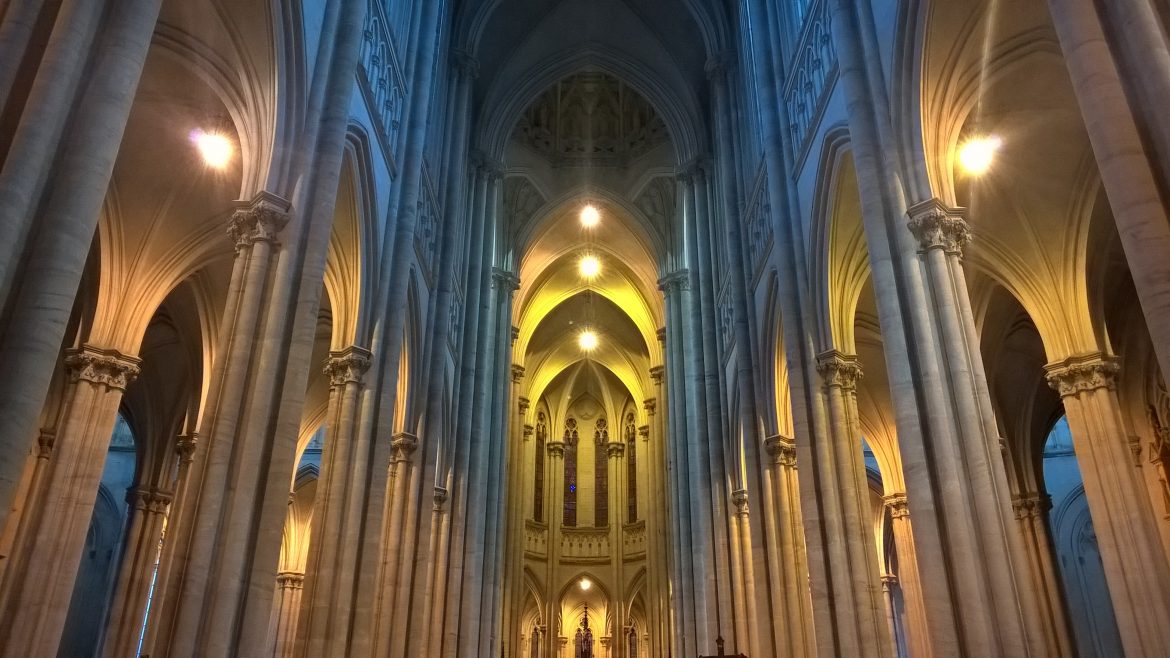Photo Credit: Nicolas Brigante via Unsplash
Sacred spaces and reflections on light
Julliana “Yanni” Santos, Managing Editor
It was a snow-covered day when I visited Hart House to meet a dear friend of mine for a visit to the art museum there. I was half an hour early, so I decided to walk around. On the first floor, I found a small chapel, just big enough for 20-30 people to fit in. The room was tucked away in Hart House’s stone hallway, beside the dining room where beautiful piano music was drifting through (students often go there to play the piano at any time of the day). This space I discovered was the Hart House interfaith chapel.
Being there was like stepping back in time, with creaky wooden floorboards and three pairs of stained glass windows lining the outer wall, mixing with Hart House’s grey stone. The snow outside seemed to make the light sifting in much brighter, as bits of coloured glass were illuminated against the earth-toned murals surrounding the inner walls of the chapel. Walking into the space, before turning into the chapel’s interior, one larger stained glass window will catch your eye. Its full-coloured array depicts icons of Canadian wildlife, from a loon in the water, to a blue jay perched in the air, to images of bright, yellow sun rays glinting off of dragonfly wings. A framed text to the side of the mural reads: “The stained glass window was dedicated to the memory of Alice and Vincent Massey on November 1969.” The text continues to identify Will Ogilvie as the designer of the stained glass design and the painter of the inner chapel’s murals. The stained glass work was done by Rosemary Kilbourn.
Sitting in such a space brought me the same peace that I’ve found in the presence of my family when celebrating Catholic Mass with them at Our Lady of Lourdes. Attending mass at Lourdes has at times been a spiritual experience for me, rooted in the sense of community and belonging I find in my family, as well as the many parishioners and volunteers there. A small, empty chapel in a secluded place in the middle of a snow day seems like the least likely space for me to find a similar experience, when compared to Our Lady of Lourdes’ vibrant congregation, tall columns, arches, and green-patterned ceilings.
I believe it was the light and the way the space was constructed: a mix of the old and the new, the stone of Hart House’s exterior, the stained glass art, the murals, the animals, and the intrinsic implication of human hands, work, and love put into the creation of the space. In the end, I believe that a spiritual experience is (to quote my environmental psychology class’ collective conclusion when discussing awe and spirituality), “an experience where one feels and acknowledges the presence of something greater than oneself.” At Lourdes, I feel it in the careful flower decorations selected by volunteers, and the smiles I meet as I greet the people I know and who know me. In the Hart House interfaith chapel, I feel it in the orange dot of the loon’s eye, the piano music lilting in the corridors, and the friends who have come with me on my visits since then, to sit in the presence of something greater, surrounded by warmth and stained glass-filtered light.


